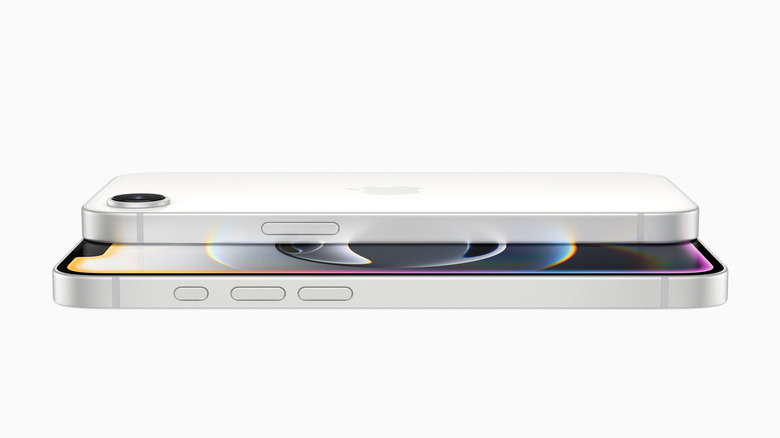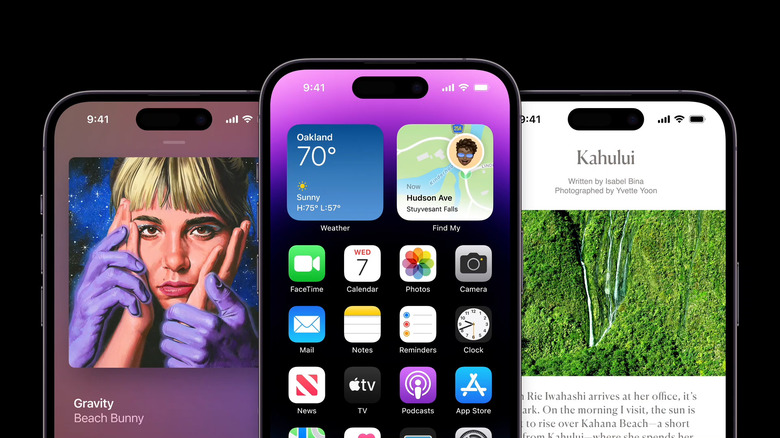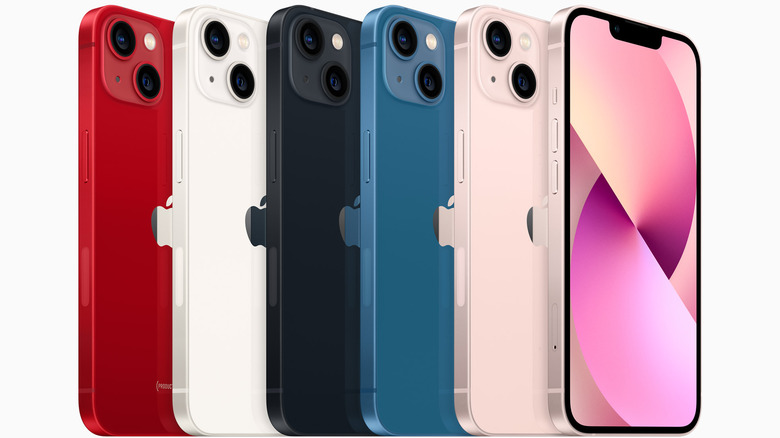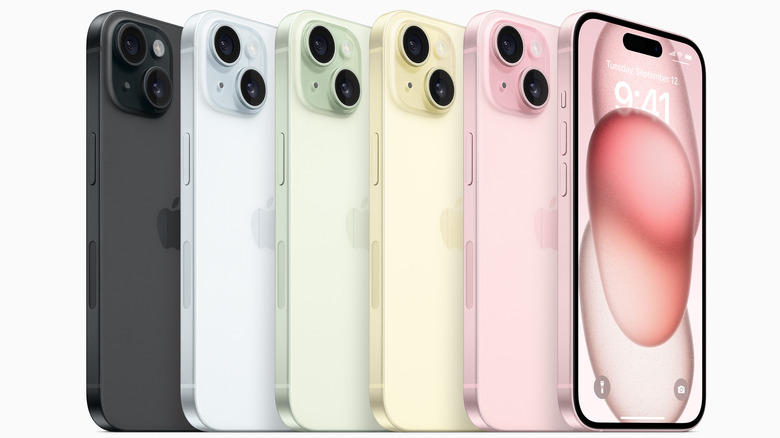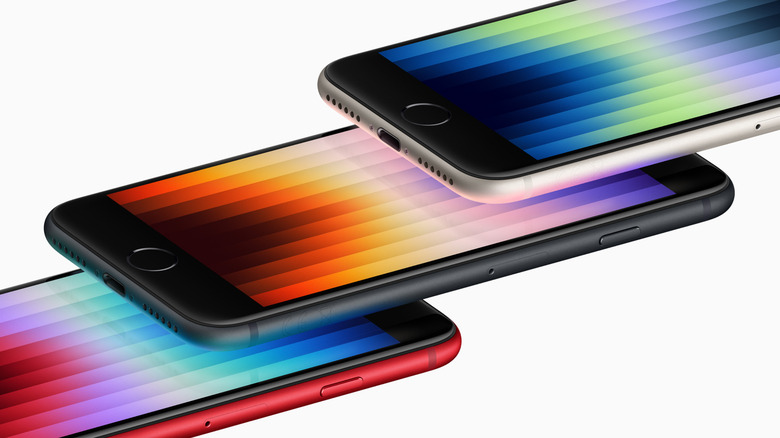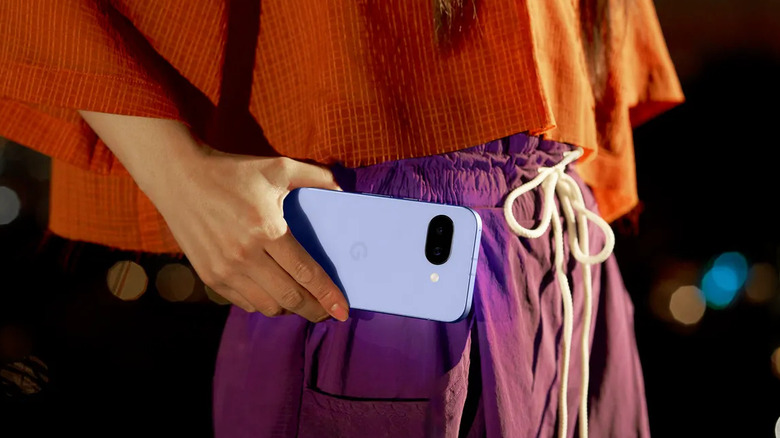5 Cheaper Alternatives To The iPhone 16e
We may receive a commission on purchases made from links.
Apple fans have clamored for a cheap iPhone ever since the SE Gen 3 launched in 2022. It finally came to fruition with the iPhone 16e, which is just the right size for your hand and wallet. The 6.1-inch screen makes it easy to hold, even for people with smaller hands. Moreover, it currently retails for just $599 for a 128-GB configuration, and $699 for a 256-GB model — a great deal for a brand-new iPhone, particularly one equipped with the latest A18 chip with Apple Intelligence.
But let's not rush to check out just yet, because there are some enticing 16e alternatives for less money. Yes, the iPhone 16e is a good value, but it's far from perfect. In fact, Apple omitted many features to keep the cost down — including an ultrawide camera — which people have come to expect in flagship smartphones. Yes, Apple says the single rear camera has a built-in 2X telephoto feature, but it's not a real optical zoom. Instead, it uses algorithms to boost the image, which is certainly not ideal.
Furthermore, there is no MagSafe on the iPhone 16e. No camera control button. Notch, instead of a Dynamic Island. The 5G, Wi-Fi, and ultra-wideband chips are also less capable than those on the iPhone 16. Fortunately, you can enjoy some of those features while saving money by opting for these five iPhone 16e alternatives. Time to crack the 16e wide open!
iPhone 14 Pro
Why go for the iPhone 16e when you can treat yourself to Pro hardware for less money? An unlocked and renewed iPhone 14 Pro costs as low as $513.50 on Amazon, and trumps the 16e in almost every single way.
Most notably, the iPhone 14 Pro camera system is a major upgrade, giving you an ultrawide and a 3x telephoto, both of which are not present on the 16e. Even when you compare the main camera, it's a night-and-day difference. The iPhone 14 Pro has a much larger 1/1.28" sensor with 1.22 micrometer pixels (µm)while the 16e has a 1/2.55" sensor with 0.7µm pixels. So, although both have 48 Megapixels (MP), the 14 Pro's camera lets more light in, resulting in a higher quality image.
The iPhone 14 Pro is also superior in the display department. Both are OLEDs with XDR Retina certification, though the 14 Pro is the first iPhone with a ProMotion 120Hz display for smoother animations. The 14 Pro also has an edge in brightness, peaking at 2,000 nits claimed, 1,791 measured, compared to 1,200 nits max peak brightness on the 16e. Oh, and the 14 Pro also treats you with a Dynamic Island instead of the unattractive notch.
As a newer model, the 16e has some advantages over the 14 Pro. It's equipped with an Apple A18 processor, which is quicker than the 14 Pro's A16, and 2GB more random access memory (RAM). It also has a bigger 4,005-mAh battery, compared to 3,200 mAh. Still, only the 14 Pro supports MagSafe.
iPhone 13/13 Mini
Don't care about pro camera features? Then, you can save even more cash by going for the iPhone 13 family. An unlocked, renewed iPhone 13 now retails for under $300 on Amazon and still provides a flagship-level experience.
The iPhone 13 doesn't have the camera upgrades of the Pro models, but its dual camera system still trumps the 16e. Yes, its sensor only has 12 MP, but they are bigger at 1.7µm, and its lens also has a wider f1.6 aperture. In other words, it lets more light in, resulting in a surprisingly clean image. Unsurprisingly, the 16e produces slightly better images from the main camera but lacks the ultra-wide 120-degree FOV unit. Having this camera means you can cram more stuff into your images.
The iPhone 13 also shares a display with the iPhone 16e. Both are 6.1-inch OLEDs with a resolution of 1170 x 2532 pixels and peak brightness of 1,200 nits, covered in Ceramic Shield glass. Is a 6.1-inch reach too big for you? The 13 Mini was the last small iPhone with a palm- and pocket-friendly 5.4-inch display. Yes, it has a smaller battery than the regular iPhone 13 (2,438 mAh), but holding it in your hand is a true revelation. It's affordable, too — an unlocked, renewed unit costs under $275 on Amazon.
There is no question that the A18 chip in the 16e is vastly superior to the A15 in both 13s. The new model also has double the RAM at 8 GB. However, elsewhere, the 13s are either equal or better, while costing significantly less.
iPhone 15
You don't have to settle for lower performance and fewer software updates, as the previous-gen iPhone 15 also costs less than the 16e. An unlocked and renewed unit currently sells for under $500 on Amazon. Even the bigger iPhone 15 Plus is cheaper at $530 on Amazon, yet it offers significantly more screen real estate with a 6.7-inch diagonal.
Still, the 6.1-inch OLED screen on the regular 15 is big enough for most people. Compared to 16e's display, it has nearly the same resolution, but much higher peak brightness at 2,000 nits. Unfortunately, the iPhone 15 and 15 Plus also cap at 60 Hz, which has been the biggest trade-off in the entry-level iPhones ever since the industry moved to 90Hz/120Hz screens.
You get a taste of the future in both iPhone 15s, as they are equipped with the Dynamic Island. The camera system on both 15s is also better than on the 16e. The main camera on all phones has 48 MP, but that's where the similarities end. The 15s have a significantly larger 1/1.56 sensor, and also an ultrawide 12-MP unit, which the 16e lacks.
We probably sound like a broken record, but yes, the 16e has a significantly beefier A18 chip with Apple Intelligence, compared to an A16 in both iPhone 15s. It also has 2 GB more RAM and a larger battery than the 15. Still, the A16 Bionic is nothing to sniff at and offers enough performance for hiccup-free operation. The 15 is also the first iPhone with a USB-C charging port, bringing you closer to that one-cable fantasy.
iPhone SE Gen 3
Do you have a very old iPhone and want to get a newer one on the cheap? The predecessor of the 16e is a great option. The iPhone SE 3 pairs the solid A15 chip with 5G and a familiar design that old iPhone users will quickly get used to. No notch. No Face ID. Just a good old rectangular display with the speedy fingerprint sensor below. Best part — you can get an unlocked, renewed iPhone SE 3 from Amazon for around $160 for a 64-GB version, or $210 for a 128-GB version.
That's cheap for a smartphone that offers essentially the same performance and camera as the iPhone 13. The A15 Bionic chip is still relevant today, and it's likely to be upgraded at least to iOS 22 (2028), with a few more years of security patches. This means you'll be able to use the iPhone SE 3 at least until 2030 and enjoy every app on the App Store. Not bad for a $200 phone!
Of course, you'll need to settle for some yesteryear features with the iPhone SE 3. Although notch-less, the screen is small by today's standards at just 4.7 inches. The display itself is an IPS, meaning no deep OLED blacks and contrast. And while the main camera shares the sensor with the iPhone 13, the selfie cam is a low, 7-MP affair, though the main camera fares better with 12 MP. The battery is tiny at just 2,018 mAh, though the iPhone SE 3 at least supports relatively quick 20W wired charging (50% in 30 minutes) via Lightning and 7.5W Qi wireless charging.
Google Pixel 9a
We know that migrating to an Android phone seems scary if you've always used an iPhone. But the Pixel 9a is simply a great phone, with better features than the 16e, and it is currently on sale on Amazon for $399, brand new! Yes, it has no iMessage, but the RCS cross-platform messaging standard works surprisingly well. Your iMessage friends will get typing indicators, delivered status messages, and high-res images. The OS is also free from bloatware, and it's constantly updated with new and useful features, with seven years of planned OS updates.
The only area where the 16e is the clear winner is performance. The Tensor G4 is a speedy, flagship-level chip, but the A18 is still faster and more efficient. Day-to-day, though, the Pixel 9a is buttery-smooth, with quick app launches and fluid animations. In fact, thanks to the 6.3-inch P-OLED screen with a 120Hz refresh rate, the 9a feels smoother. The display is also significantly brighter, peaking at 2,700 nits. The 16e wins on resolution, but with a pixel density of 422 ppi, you won't see individual pixels on the 9a, anyway. As for battery life, the 9a has long runtimes thanks to its big 5,100-mAh unit, despite the less-efficient processor.
The camera system is another area where the 9a trumps its Apple rival. To begin with, the Pixel 9a uses dual cameras — a 13-MP ultrawide to accompany the 48-MP main unit. The cameras produce true-to-life images with great colors and dynamic range. Pixel 9a's 13-MP selfie cam also produces better results and has a wider FOV — great for group selfies.
